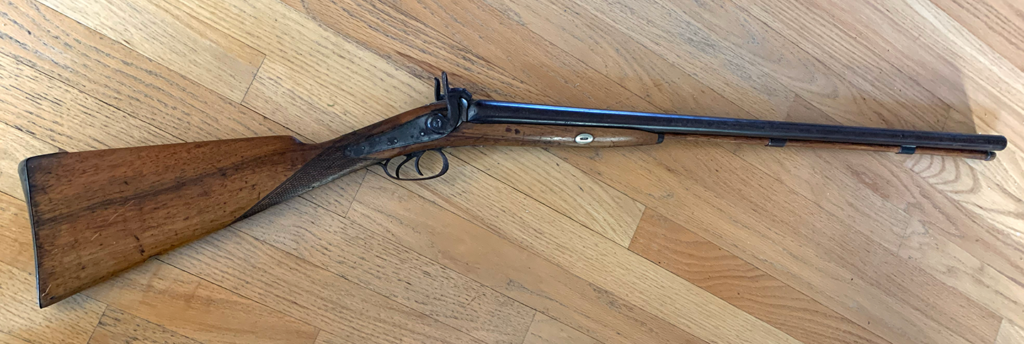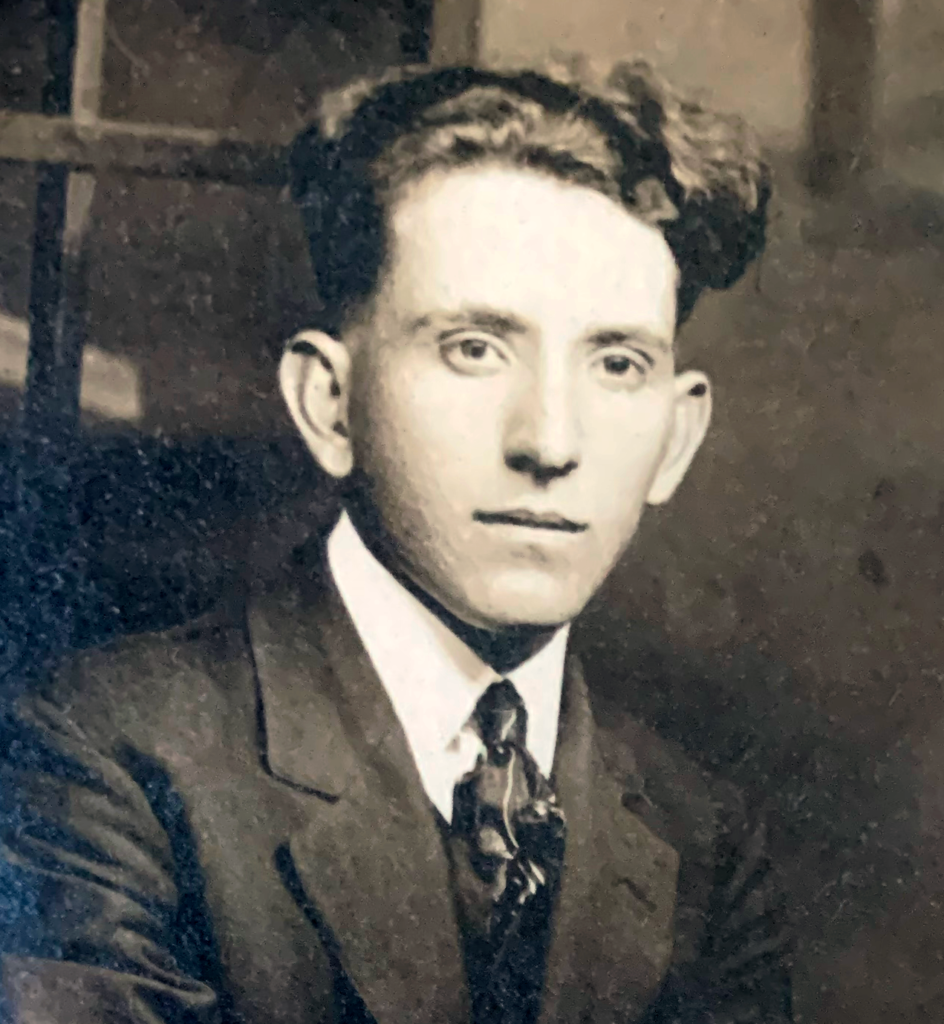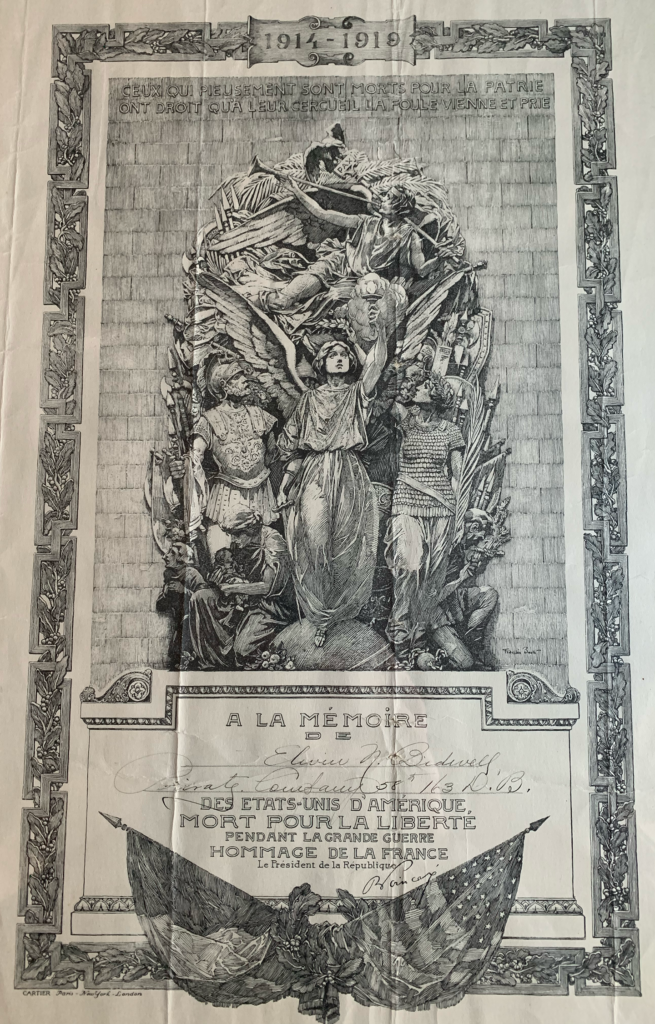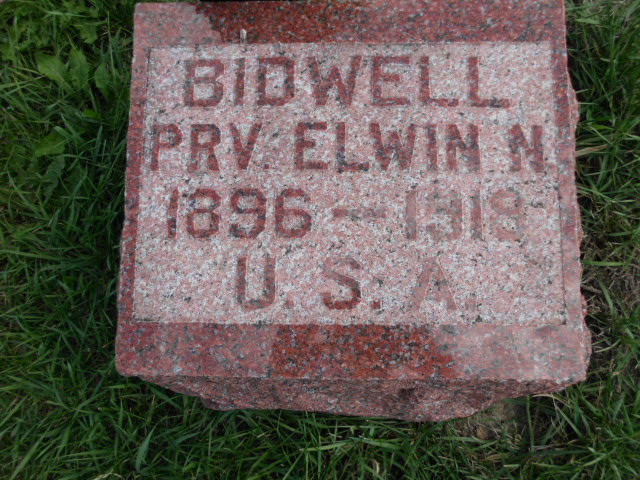
Elwin Newell Bidwell, always known as Newell (given in recognition of his mother’s family name), was born on a farm near Calumet, the firstborn child of Guy Benjamin Bidwell (1873-1959) and Mary Elizabeth “Lizzie” Newell (1873-1947), who had both been born in Minnesota. Two other children followed the 1896 birth of Newell: a daughter, Olive Ruth Bidwell (1898-1980), and another son, Guy Chester Bidwell (1905-1989), known throughout his life as “Skeet.” By the time of the 1910 census, the family had moved into the town of Calumet, where the parents owned and managed a hotel.
Newell Bidwell is one of only two band members — the other is Ralph Edward Langley (1880-1977) — who did not have a German heritage (for most of the band members, the heritage was primarily that of Schleswig-Holstein). Newell reflected English ancestry on both the paternal (Bidwell) and maternal (Newell) sides.
The Bidwell family had been in the U.S. since the Colonial era, centered largely in upstate New York. The family includes several illustrious names. One is Gen. Daniel Davidson Bidwell (1819-1864), a Union general who died in the war (a monumental statue in Buffalo, New York, commemorates his service). Another is John Bidwell (1819-1900), an early California pioneer and rancher; soldier (serving in the Mexican-American War and later promoted to brigadier general); politician (representing California in the U.S. House of Representatives); and founder of the city of Chico, California.

In addition to the distant family connection to the Civil War through Gen. Daniel D. Bidwell, Newell’s immediate family also saw Civil War service, with both his grandfather, Benjamin Bidwell (1825-1898), and his granduncle, Francis Lorenzo Bidwell(1) (1843-1928), known as “F. L.,” serving in the Union army. F. L. Bidwell’s role was distinguished; he participated in the battles of Lookout Mountain, Chancellorsville, Chickamauga, and Sherman’s march to the sea.

After F. L. Bidwell was mustered out of service in 1865, he farmed briefly in his native Wisconsin but then came to O’Brien County in 1880. He was a prominent stock breeder in Liberty Township, owning 480 acres (the largest farm in the township) in Section 16 just northwest of Calumet, sharing the section with Gustav “Gus” Bandholz, father of Calumet German Band member Charles Bandholz (1888-1919). F. L. farmed there for 48 years, until his death in 1928. At F. L.’s funeral in Sutherland, the interment featured military honors, and the Sutherland stores were closed in recognition.

Newell Bidwell’s immediate family was a music-loving one, known to have instruments in the household, which makes it unsurprising that Newell should have found himself as the piccolo player in a German township band even if he did not reflect the other members’ ethnic heritage. As a 12-year-old at the time of the 1909 band photo, Newell was the youngest of the members, although the band also included two other young teens: 13-year-old Earl Frederick Smith (1896-1969) and 14-year-old John Hans Jurgen Brumm (1894-1956).

In his work life as a young man, Newell Bidwell held several positions connected to railroads and railway systems, a growth industry in this era. Several small news items in The Sutherland Courier document his employment: “Newell Bidwell went down to Newell(2) last week to accept a position as helper with the Illinois Central.” (31 July 1913); “Newell Bidwell who has been helper at the depot here in Sutherland for the past two years has been given a promotion to the position of night ticket agent and assistant cashier at Eagle Grove, and will leave for that place the last of the week.” (1 March 1917); and “Newell Bidwell left Friday for Sioux City where he has accepted a position with the Sioux City Service Co.”(3) (16 August 1917).
As with other Calumet German Band members, however, world-historic events dramatically interrupted budding career plans. In 1917, after several years of official neutrality, the U.S. finally intervened militarily in World War I, and the Selective Service Act of 18 May 1917 changed these young men’s lives forever.
Continuing the family tradition of military service, which had seen his grandfather Benjamin and granduncle F. L. serving in the Civil War, young Newell Bidwell was also inducted into U.S. Army service. Upon enlistment, he served as a Private First Class in the 15th army battalion.
But the fates of the three men were sadly different. Just as with Newell’s bandmate, Charles Bandholz (1888-1919), Newell fell victim to the massive global flu pandemic (the so-called “Spanish flu,”(4) a misnomer), dying in 1918 at Camp Dodge, Iowa — 17 days shy of his 22nd birthday. The war ended just 32 days later. Newell’s granduncle, already 75 years old at the time of the boy’s death, lived for another 10 years, and his father for another 41. The early death of a “golden-boy” firstborn had a great impact on other family members; Newell’s brother “Skeet” Bidwell, a young teenager at the time of the death, was known to be deeply affected by the loss of his older brother for the remainder of his life.

A commemorative certificate of honor from the French Republic, bestowed posthumously to Newell Bidwell, as given also to other members of the U.S. expeditionary forces in WWI who died while in service, reads, “A la mémoire de Elwin N. Bidwell, Private, 58th Company, 163 D. B. des Etats-Unis D’Amérique, mort pour la liberté pendant la grande guerre. Hommage de la France. Le Président de la République. [signature: Raymond Nicolas Landry Poincaré].” (“In memory of Elwin N. Bidwell, Private, 58th Company, 163 D.B.(5) of the United States of America, who died for freedom in the great war. Tribute from France. The President of the Republic. [signature: Raymond Nicolas Landry Poincaré].”)
Newell Bidwell, along with his father, his grandfather, his granduncle, and other Bidwell relatives, is buried in Waterman Cemetery in Sutherland.

Subscribers to Ancestry.com may wish to further explore some family connections of Newell Bidwell by accessing an Ancestry profile page (within the context of a “Mugge Family Tree”).
Connection to Other Band Members
In addition to the township neighbor connection noted above — in which Newell’s granduncle F. L. Bidwell farmed directly across the road from the farm of Gustav Bandholz, father of band member Charles Bandholz — there is a family connection, an in-law cousin relationship, between Newell Bidwell and his bandmate John Brumm. Newell’s first cousin once removed, Lester Orlando Bidwell (1886-1953), was married to Dora Johannsen (1886-1956), who was John Brumm’s first cousin. A schematic (which also illustrates a relationship from John Brumm to band member Henry W. Mugge) more easily shows this relationship. (See the schematic.)
There is also a more distant in-law connection between Newell Bidwell and Henry W. Mugge, although the connection did not occur until five decades after this photo. See below for details.
Connection to the Mugges
The Bidwells are distantly related to the Mugges through marriage. One son of F. L. Bidwell, Delbert (1875-1903), who was Newell Bidwell’s first cousin once removed, married Elizabeth M. Schultz (1879-1957), who was a sister of Albert Henry Schultz (1882-1959). Albert Schultz’s second wife was Verna Clare Stoaks (1889-1976), who after Albert’s death became the second wife of Henry W. Mugge (1891-1967) in 1962. This relationship may be difficult to understand descriptively, so a schematic helps to better show it. (See the schematic.)
Note also that the farm of F. L. Bidwell (Newell’s granduncle) was in the sections to the southeast and to the south, just across the road, from the farm of Henry J. Schallau (1874-1934) and Rosa Brecht (1871-1950), which beginning in 1952 was taken over by Henry W. Mugge’s son Lyle John Mugge (1915-2000) and since 1976 has been farmed by Lyle’s son Paul Henry Mugge (b. 1951). Parts of the F. L. Bidwell property at one point were farmed by Henry Mugge and Lyle Mugge, and later by the Fiddelke families (who are also distantly related to the Mugges).
Footnotes
(1) Francis Lorenzo Bidwell’s middle name is almost certainly in recognition of Lorenzo Dow (1777-1834), a widely known and admired itinerant (and highly eccentric) American evangelist and author, whose fame and influence inspired countless mid-19th-century American families, especially on the frontier, to name their children after him. An examination of the 1850 census has found the name Lorenzo to be among the most popular male given names in the U.S. at that time.
(2) Only a coincidence of names. Newell is a small town in Buena Vista County, about 50 miles from Calumet.
(3) Spanning the last decades of the 19th century and the first decades of the 20th century, the Sioux City Service Company operated an urban railroad system in Sioux City, Iowa. Beginning with horse-drawn trolleys, the system adopted steam locomotion, then electrification, and eventually the construction of an elevated line. The years immediately before World War I were peak years for the system, which operated sporadically after the war and was abandoned only in 1948.
(4) As noted also in the biosketch for Charles Bandholz, the great 1918 flu pandemic was called the “Spanish flu” due to a misunderstanding about its origins. Epidemiologists are uncertain about where the disease actually arose. When the flu broke out in the final years of the war, some of the belligerent nations enforced censorship of the news in an attempt to contain panic. But newspapers in Spain, which was a neutral country, were among the first to report on the outbreak, thus leading to a common yet incorrect assumption about origin. (Today epidemiologists and public health authorities reject geographic labels for diseases altogether in order to prevent stigma.) The 1918 pandemic was caused by the H1N1 influenza A virus that has also been the source of other pandemics, most recently in 2009.
(5) Depot Brigade.

